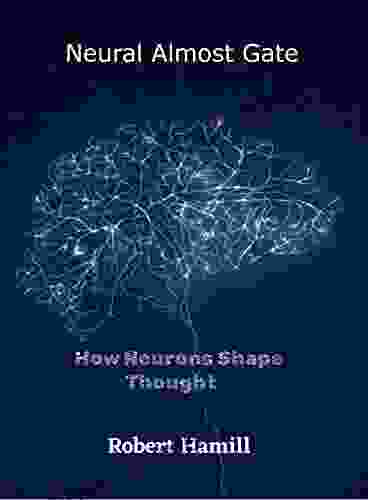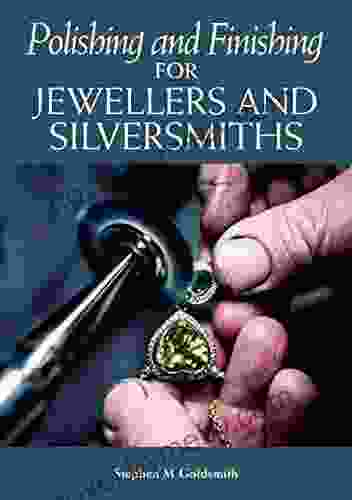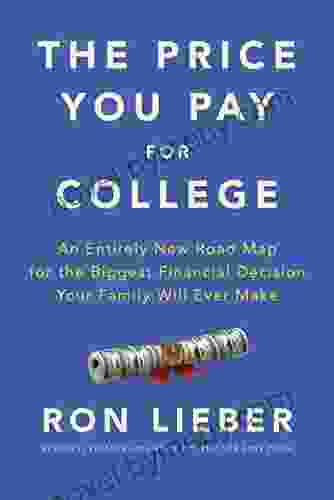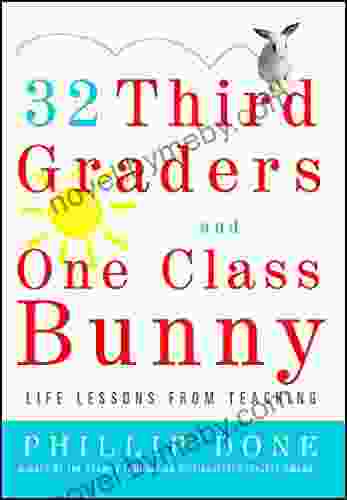Neural Almost Gate: How Neurons Shape Thought

In the intricate tapestry of the human brain, where countless neurons dance in a symphony of electrical impulses, lies a profound mystery: how does this biological machinery give rise to the rich and complex tapestry of thought?
5 out of 5
| Language | : | English |
| File size | : | 2430 KB |
| Text-to-Speech | : | Enabled |
| Screen Reader | : | Supported |
| Enhanced typesetting | : | Enabled |
| Word Wise | : | Enabled |
| Print length | : | 117 pages |
For centuries, scientists have sought to unravel this enigma, delving into the depths of neurophysiology to understand the mechanisms that govern our ability to perceive, learn, and reason. In recent years, a groundbreaking theory has emerged, challenging our conventional wisdom and offering a tantalizing glimpse into the neural underpinnings of thought.
The Neural Almost Gate: A Revolutionary Concept
The Neural Almost Gate, first proposed by neuroscientist Dr. Christopher Eliasmith, is an innovative framework that describes how neurons encode information and process it into the intricate patterns of thought.
At its core, the Neural Almost Gate postulates that neurons behave as highly selective filters, responding only to a narrow range of inputs. However, these filters are not entirely exclusive; they exhibit a degree of overlap, allowing for a subtle blending of information.
This seemingly innocuous concept has profound implications for our understanding of cognition. It suggests that neurons operate not in isolation but in interconnected networks, forming intricate webs of associations that give rise to the rich tapestry of human thought.
The Power of Overlapping Filters
The Neural Almost Gate theory highlights the remarkable ability of neurons to process multiple pieces of information simultaneously.
Imagine a group of neurons that respond to different aspects of an object, such as its shape, color, and texture. When multiple neurons fire together, they create a unique pattern of activity that encodes the object's identity. This overlapping activity allows the brain to represent complex objects and concepts with great precision.
Moreover, the Neural Almost Gate theory explains how neurons can form associations between different pieces of information. When two neurons fire together repeatedly, the synaptic connections between them strengthen, creating a more efficient pathway for the flow of information.
This process of Hebbian learning, named after the psychologist Donald Hebb, is a fundamental mechanism for memory formation and the development of cognitive skills.
The Role of Context in Thought
The Neural Almost Gate theory also emphasizes the importance of context in thought processes.
When a neuron receives an input, its response is influenced by the activity of other neurons in its vicinity. This network activity creates a context that shapes the way the neuron interprets and processes the input.
For example, the meaning of a word can change depending on the context in which it is used. This is because the network activity surrounding the word's representation in the brain influences its interpretation.
The Neural Almost Gate in Action
The Neural Almost Gate theory has far-reaching implications for our understanding of various cognitive processes.
In perception, the theory suggests that neurons in the visual cortex work together to extract meaningful patterns from the raw sensory data received from the eyes. These patterns are then passed on to higher brain areas for further processing.
In memory, the Neural Almost Gate theory explains how neurons form complex networks of associations that allow us to recall vast amounts of information. These networks are constantly updated and modified as new experiences are acquired.
In learning, the Neural Almost Gate theory highlights the role of neural plasticity, the brain's ability to adapt and change in response to new information. This plasticity allows us to develop new skills and acquire new knowledge.
The Neural Almost Gate theory is a transformative framework that has revolutionized our understanding of how neurons shape thought.
By revealing the intricate mechanisms by which neurons encode and process information, the theory provides a tantalizing glimpse into the mysteries of the human mind. As research continues to unravel the secrets of the Neural Almost Gate, we inch closer to understanding the very essence of human cognition.
For those who seek to delve deeper into the fascinating world of neurophysiology, I highly recommend Dr. Christopher Eliasmith's book, "Neural Almost Gate: How Neurons Shape Thought." This comprehensive and engaging work offers a thorough exploration of the theory and its implications for our understanding of the human mind.
About the Author
Dr. Christopher Eliasmith is a renowned neuroscientist and professor at the University of Waterloo. His groundbreaking research on the Neural Almost Gate theory has earned him international acclaim and has significantly advanced our understanding of cognition. Dr. Eliasmith's book, "Neural Almost Gate: How Neurons Shape Thought," is a must-read for anyone fascinated by the mysteries of the human mind.
5 out of 5
| Language | : | English |
| File size | : | 2430 KB |
| Text-to-Speech | : | Enabled |
| Screen Reader | : | Supported |
| Enhanced typesetting | : | Enabled |
| Word Wise | : | Enabled |
| Print length | : | 117 pages |
Do you want to contribute by writing guest posts on this blog?
Please contact us and send us a resume of previous articles that you have written.
 Book
Book Novel
Novel Page
Page Chapter
Chapter Text
Text Story
Story Genre
Genre Reader
Reader Library
Library Paperback
Paperback E-book
E-book Magazine
Magazine Newspaper
Newspaper Paragraph
Paragraph Sentence
Sentence Bookmark
Bookmark Shelf
Shelf Glossary
Glossary Bibliography
Bibliography Foreword
Foreword Preface
Preface Synopsis
Synopsis Annotation
Annotation Footnote
Footnote Manuscript
Manuscript Scroll
Scroll Codex
Codex Tome
Tome Bestseller
Bestseller Classics
Classics Library card
Library card Narrative
Narrative Biography
Biography Autobiography
Autobiography Memoir
Memoir Reference
Reference Encyclopedia
Encyclopedia Ted Kulfan
Ted Kulfan Ralph Waldo Emerson
Ralph Waldo Emerson Robert Westbrook
Robert Westbrook Poornima Luthra
Poornima Luthra Q Hayashida
Q Hayashida Robert Kagan
Robert Kagan Sean Go
Sean Go Sanjay Sarma
Sanjay Sarma Rowland B Wilson
Rowland B Wilson Robert P Crease
Robert P Crease Rebecca Schiller
Rebecca Schiller Steve Ince
Steve Ince R Kendall Lyman
R Kendall Lyman Vaneetha Risner
Vaneetha Risner Vincent Curcio
Vincent Curcio Shinnosuke Kometani
Shinnosuke Kometani Willard Grosvenor Bleyer
Willard Grosvenor Bleyer Phylis Johnson
Phylis Johnson Yassine Tounsi
Yassine Tounsi Russell Blake
Russell Blake
Light bulbAdvertise smarter! Our strategic ad space ensures maximum exposure. Reserve your spot today!

 Ernesto SabatoDive into the Delights of Coastal Cuisine: A Culinary Adventure with Saltbox...
Ernesto SabatoDive into the Delights of Coastal Cuisine: A Culinary Adventure with Saltbox... Duane KellyFollow ·6.2k
Duane KellyFollow ·6.2k Ed CooperFollow ·9.5k
Ed CooperFollow ·9.5k Giovanni MitchellFollow ·3.9k
Giovanni MitchellFollow ·3.9k Deion SimmonsFollow ·3.6k
Deion SimmonsFollow ·3.6k Brandon CoxFollow ·7.5k
Brandon CoxFollow ·7.5k Thomas PowellFollow ·4.9k
Thomas PowellFollow ·4.9k Miguel NelsonFollow ·8.3k
Miguel NelsonFollow ·8.3k Dallas TurnerFollow ·3k
Dallas TurnerFollow ·3k

 Mike Hayes
Mike HayesArthur Meighen: A Life in Politics
Arthur Meighen was one of Canada's most...

 Bryan Gray
Bryan GrayVindicated: Atlanta's Finest
In the heart of Atlanta, a...

 Houston Powell
Houston PowellHis to Defend: A Captivating Legal Thriller That Will...
An Unforgettable...
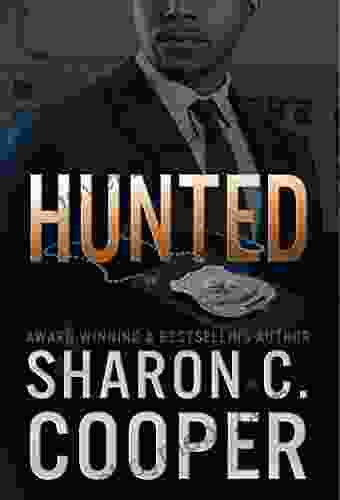
 John Green
John GreenUncover the Riveting Tale of "Hunted: Atlanta Finest" - A...
Prepare yourself for a...
5 out of 5
| Language | : | English |
| File size | : | 2430 KB |
| Text-to-Speech | : | Enabled |
| Screen Reader | : | Supported |
| Enhanced typesetting | : | Enabled |
| Word Wise | : | Enabled |
| Print length | : | 117 pages |


